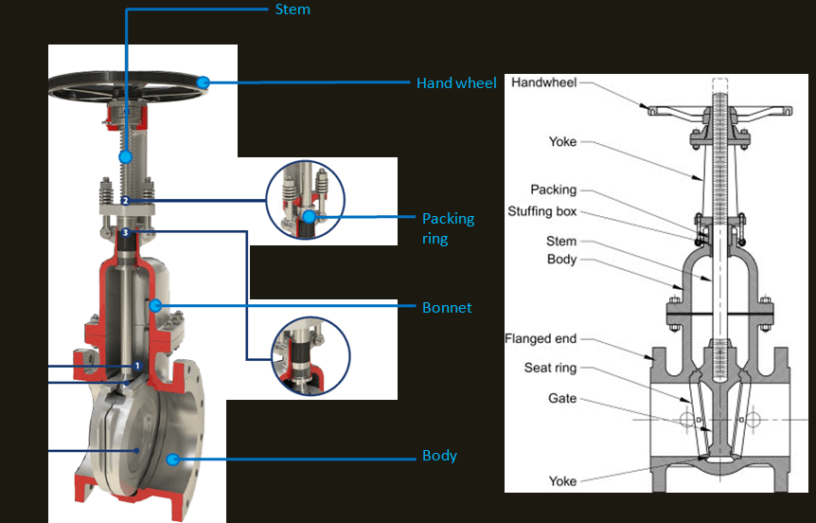
Type of Gate Valves The piping talk
The gate valve refers to a valve in which the gate closing member moves along the vertical direction of the center line rising stem gate valve-open and closed position of the passage. Generally, it consists of valve body, valve seat, valve stem, gate, valve cover, and sealing ring.

What is Gate Valves Diagram , Working , Advantages , Applications
Understanding gate valve diagram s: A Comprehensive Guide Gate valves are essential components in various industrial applications, allowing for the control and regulation of fluid flow. To fully comprehend the functioning of gate valves, it is crucial to understand their diagrams.

GATE VALVE WORKING PRINCIPLE Mechanical Engineering Professionals
A gate valve is a linear motion valve used to start or stop fluid flow; however, it does not regulate or throttle flow. The name gate is derived from the appearance of the disk in the flow stream. Figure illustrates a gate valve. The disk of a gate valve is completely removed from the flow stream when the valve is fully open.
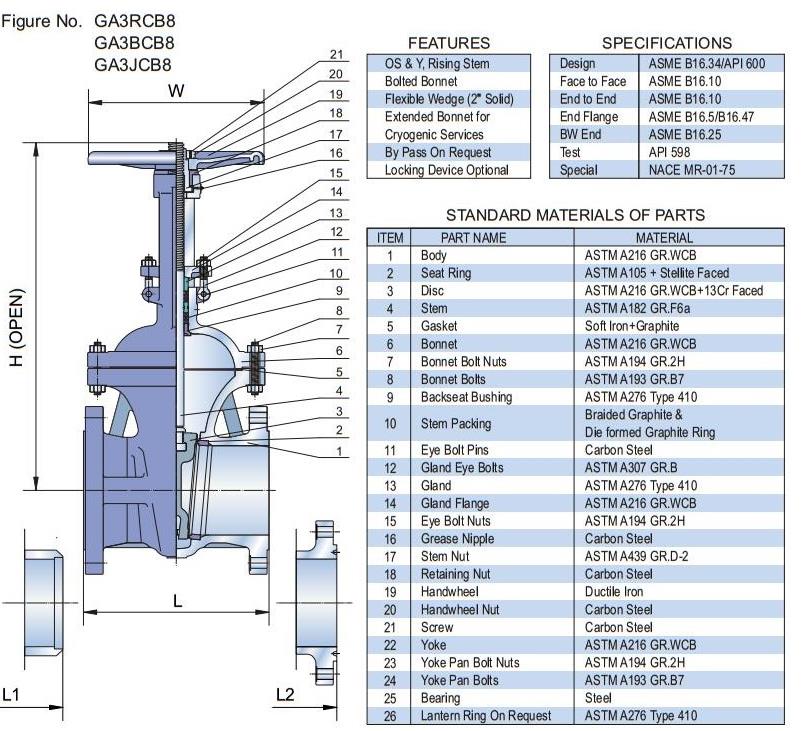
Cast Steel Gate Valve, Drawings, Dimensions & Weight Relia Valve
Gate valve diagram & parts A gate valve has seven main parts, which can be seen in Figure 3, which are: handwheel (A), stem (B), gasket (C), bonnet (D), valve body (E), flange (F), and gate (G). A flanged gate valve or threaded gate valve is the most common connection type to connect the valve to an application.
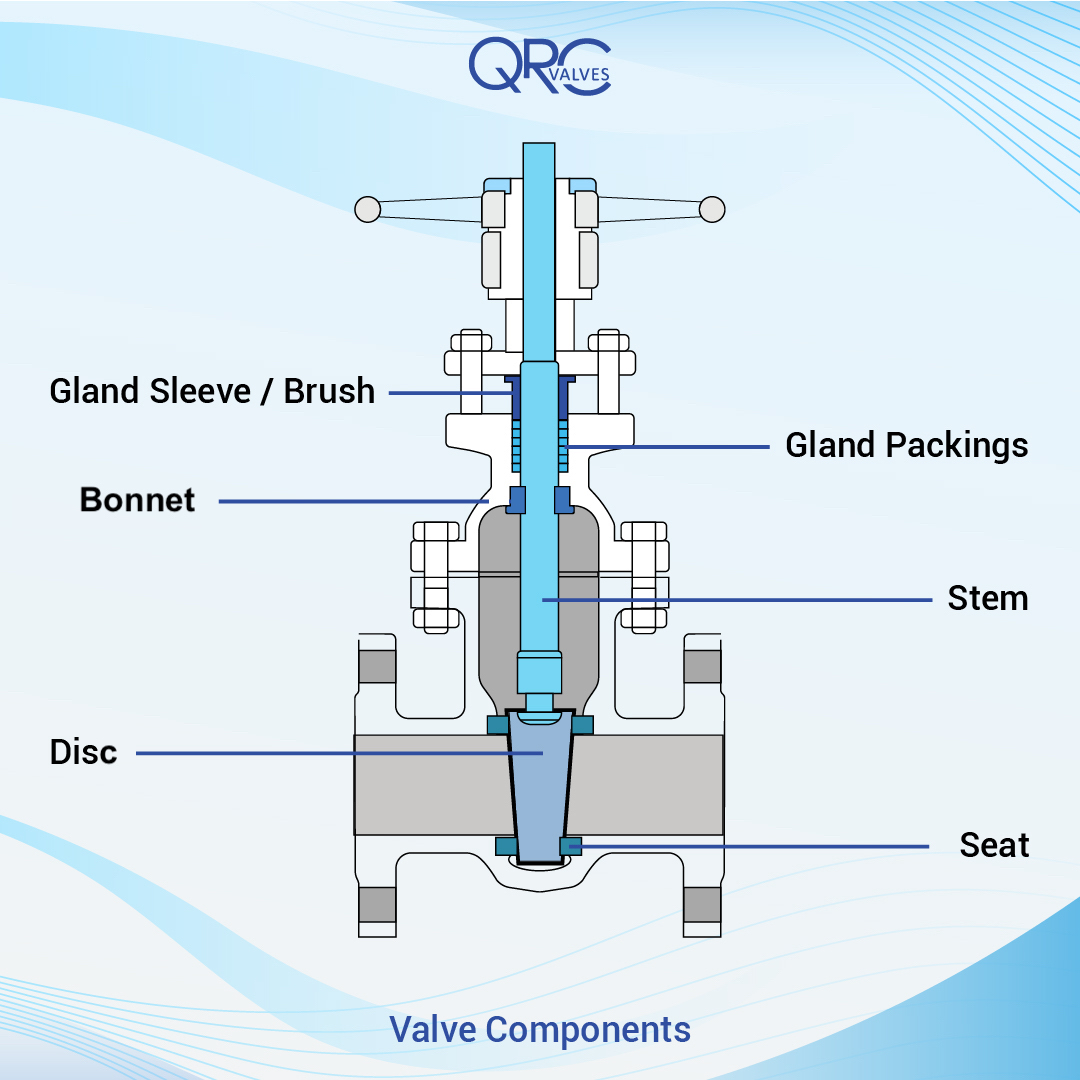
Gate Valve Components QRC Valves
Types of Valves Different types of valves are used in piping. In this article, we cover the types and classifications of valves of valves. Here are the main types of valves: Gate Valve Globe Valve Check Valve Plug valve Ball Valve Butterfly Valve Needle Valve Pinch Valve Pressure Relief Valve Gate valve
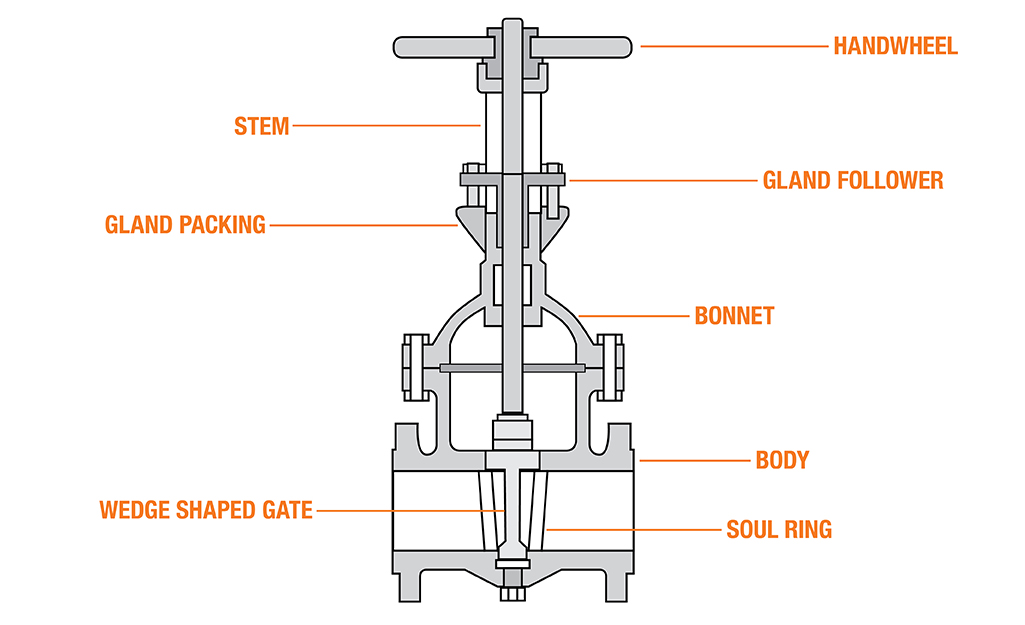
Ball Valves vs Gate Valves The Home Depot
Functioning Principle The body, seat, gate, stem, bonnet, and actuator are the essential components of a gate valve. The primary mechanism of operation is straightforward. Common gate valves are activated by a threaded stem that connects the actuator, e.g., handwheel or motor, to the gate.
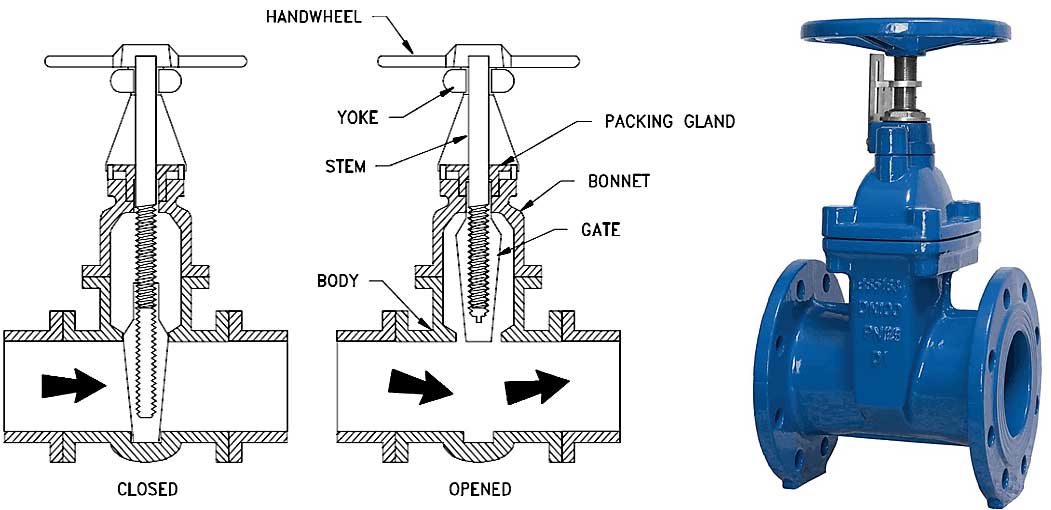
GATE VALVES Types Bertrem Products Inc.
When you look at a gate valve diagram or a gate valve parts diagram, you can see the major components that make up this powerhouse: the body, the bonnet, the stem, the gate or disc, and the seat rings. At the heart of the valve, the valve body houses the valve's internals and is typically made of ductile iron, cast iron, or stainless steel.
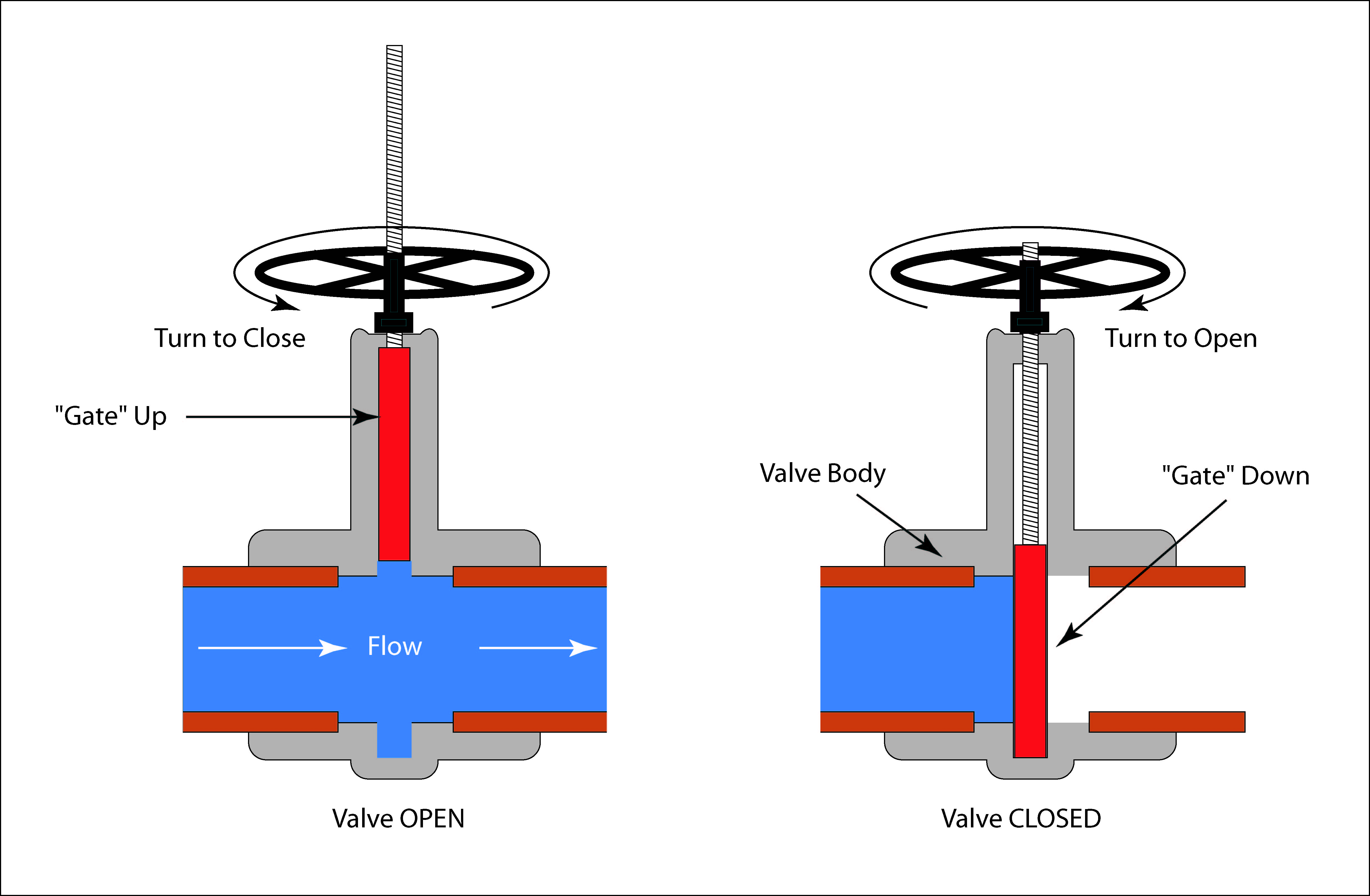
Valves Manual Valves Gate and Butterfly Valves CTG Cleaning Technologies, Inc.
Stem Gate valves can have a rising or nonrising stem design. Rising stems are attached directly to the gate and provide a visual indicator of the valve position. Nonrising stems are generally threaded into the upper part of the gate and have a pointer threaded onto the top to indicate position.
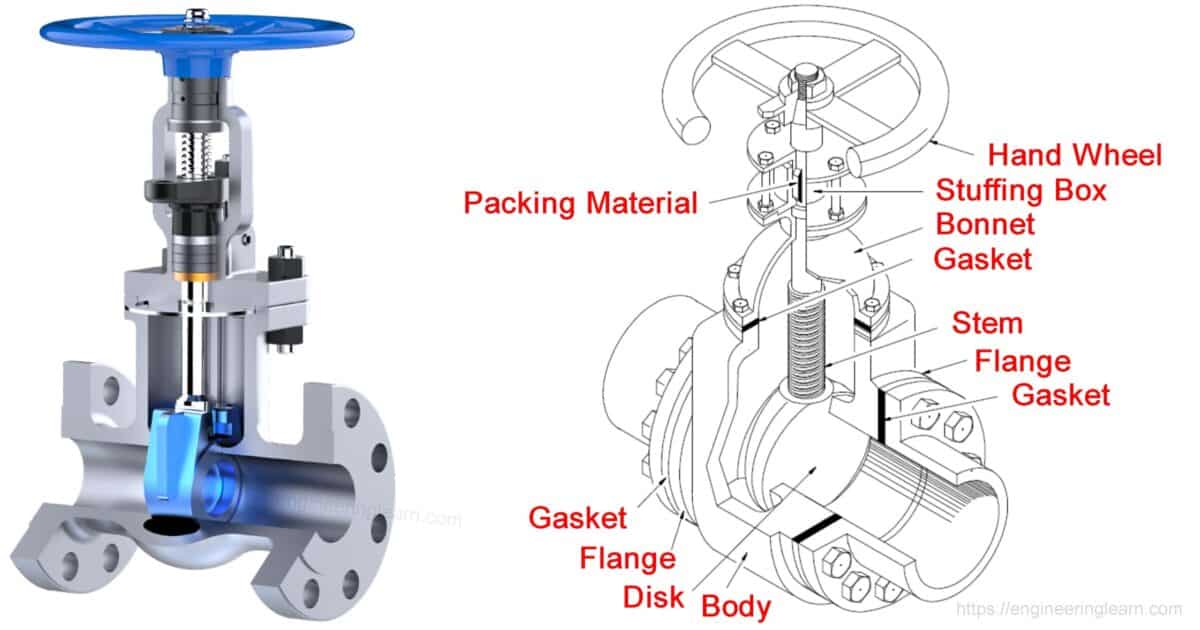
gate valve diagram with parts Gate instrumentationtools disadvantages
Gate valves (also known as knife valves or slide valves) are linear motion valves in which a flat closure element slides into the flow stream to provide shut-off. They are one of the most common valves used. Find Gate Valves by Specification or See our Directory of Suppliers Gate valve. Video Credit: CTE Skills.com / CC BY-SA 4.0

Types Of Gate Valve And Parts Engineering Discoveries
gate valve, also known as a sluice valve, is a valve that opens by lifting a barrier (gate) out of the path of the . Gate valves require very little space along the pipe axis and hardly restrict the flow of fluid when the gate is fully opened.
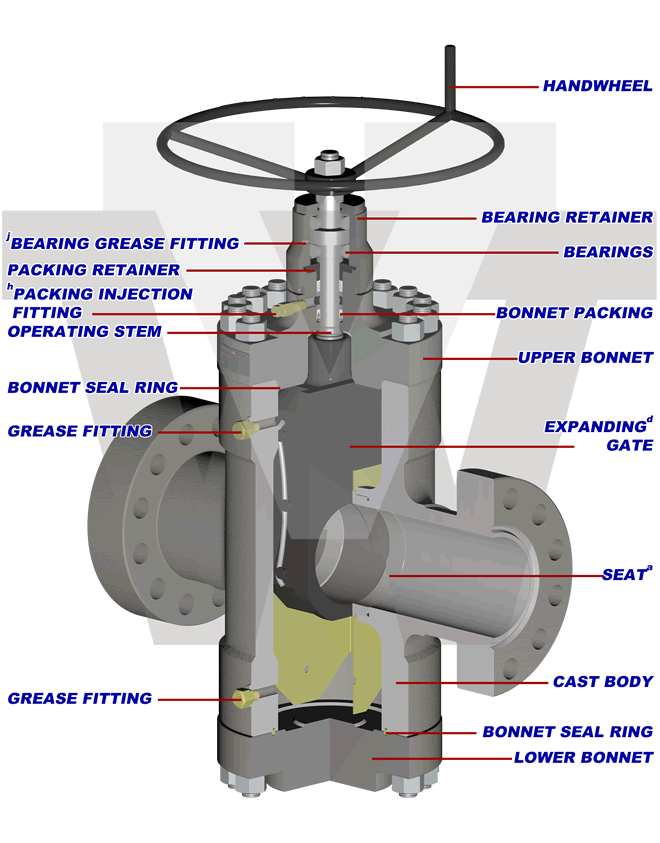
FM4 SERIES GATE VALVES Valveworks USA
A Gate valve is a linear-motion manual valve that has a vertical rectangular or circular disc that slides across an opening to stop the flow that acts as a "gate".
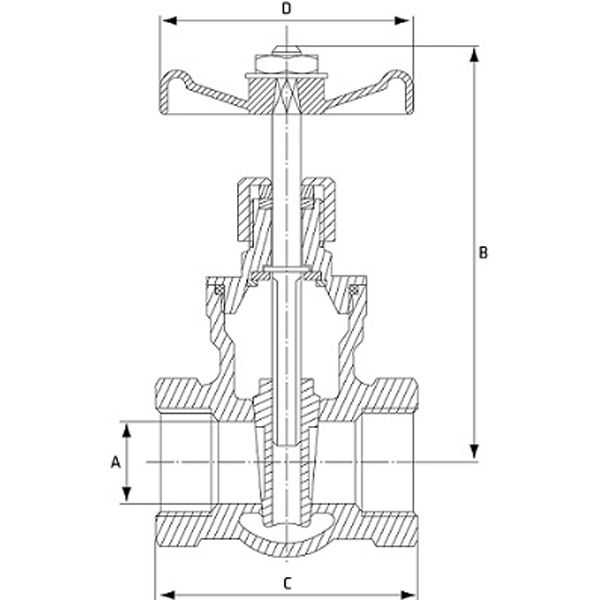
gate valve diagram construction Parts of gate valve plus top 5 functions hpd team
Gate valves are called 'full-flow' valves; there's a direct unobstructed path for flow right through the middle of the valve. A wedge-shaped brass gate is lowered into a machined slot to close the valve. They should either be completely open or completely closed.

What is an Industrial Gate Valve? MSEC
A gate valve can be defined as a type of valve that uses a gate or wedge-type disk, which moves perpendicular to flow to start or stop the fluid flow in piping. It is the most common type of that used in any process plant. It is a linear motion valve used to start or stop fluid flow.
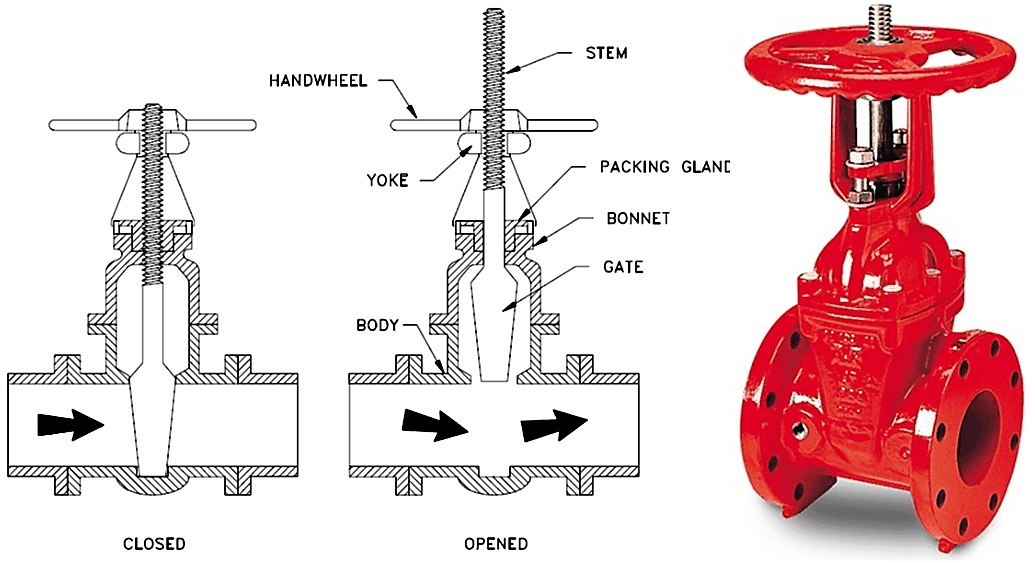
Types of Gate Valve and Parts A Complete Guide for Engineer
Gate Valve Components. The main parts of the gate valve include body, gate, bonnet, stem, packing gland and yoke. Gate valve construction; Credit: CC BY-SA 4.0. The body of a gate valve holds all of the operational parts of the valve. It is connected to the system with one of the mounting options below.
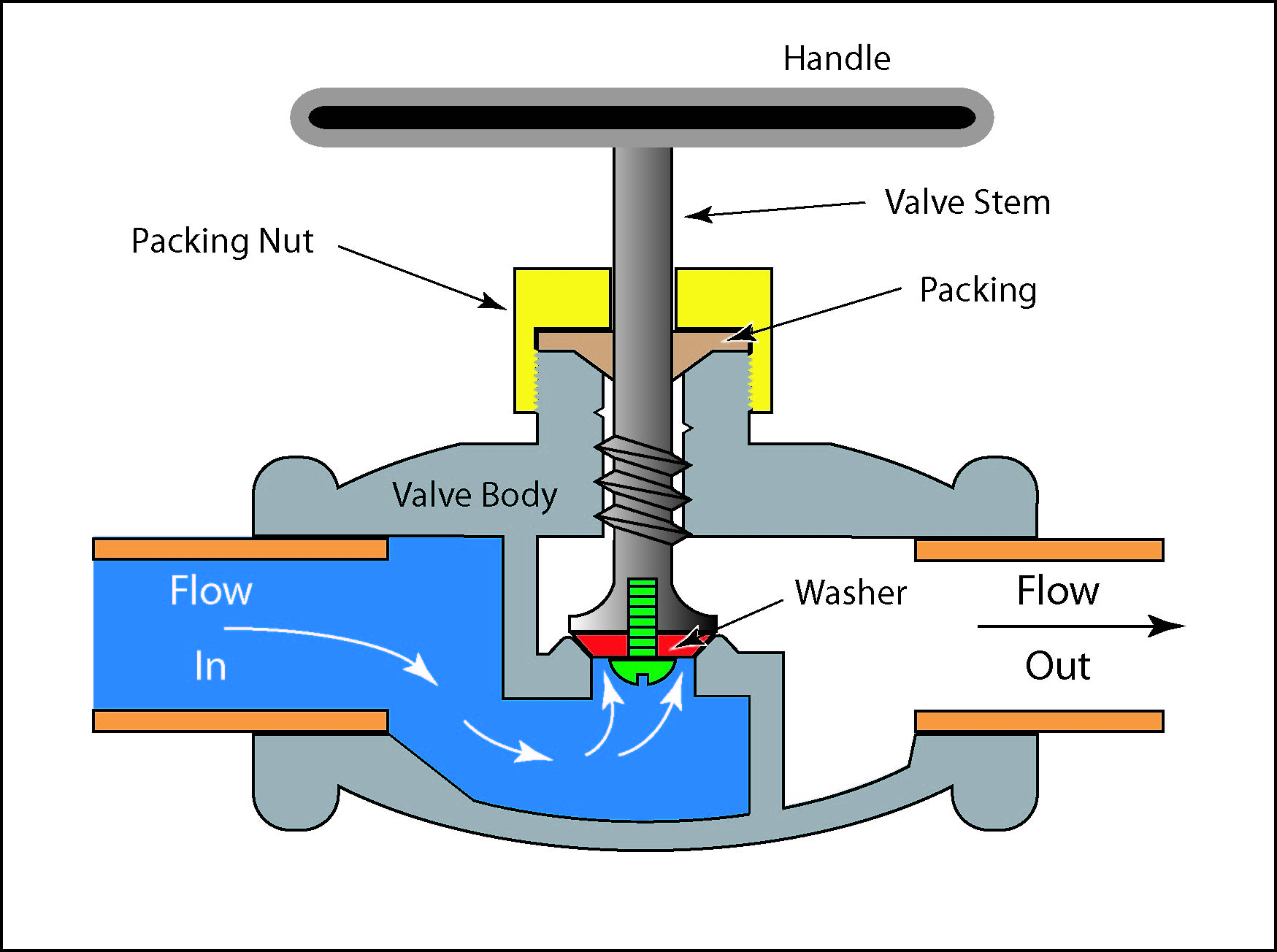
Valves Manual Valves Globe Valves CTG Technical Blog
Apply 3-in-one or penetrating oil to the gate valve. Wipe the excess oil with a rag and ensure that the oil reaches the valve's threads. Tap the valve handle with a hammer to check if the valve changes position from open to closed. Attach an adjustable wrench or channel lock on the valve handle.

Gate Valves Introduction, Types, Applicable Codes and Standards
A gate valve is a wall that has dual flow directions. It is not subject to the flow direction of the medium. Therefore, it is suitable for use in the pipeline where the medium may change the flow direction. Disadvantage of Gate Valve: The following disadvantages or demerits of Gate Valve is: We cannot use a gate valve for controlling the flow.